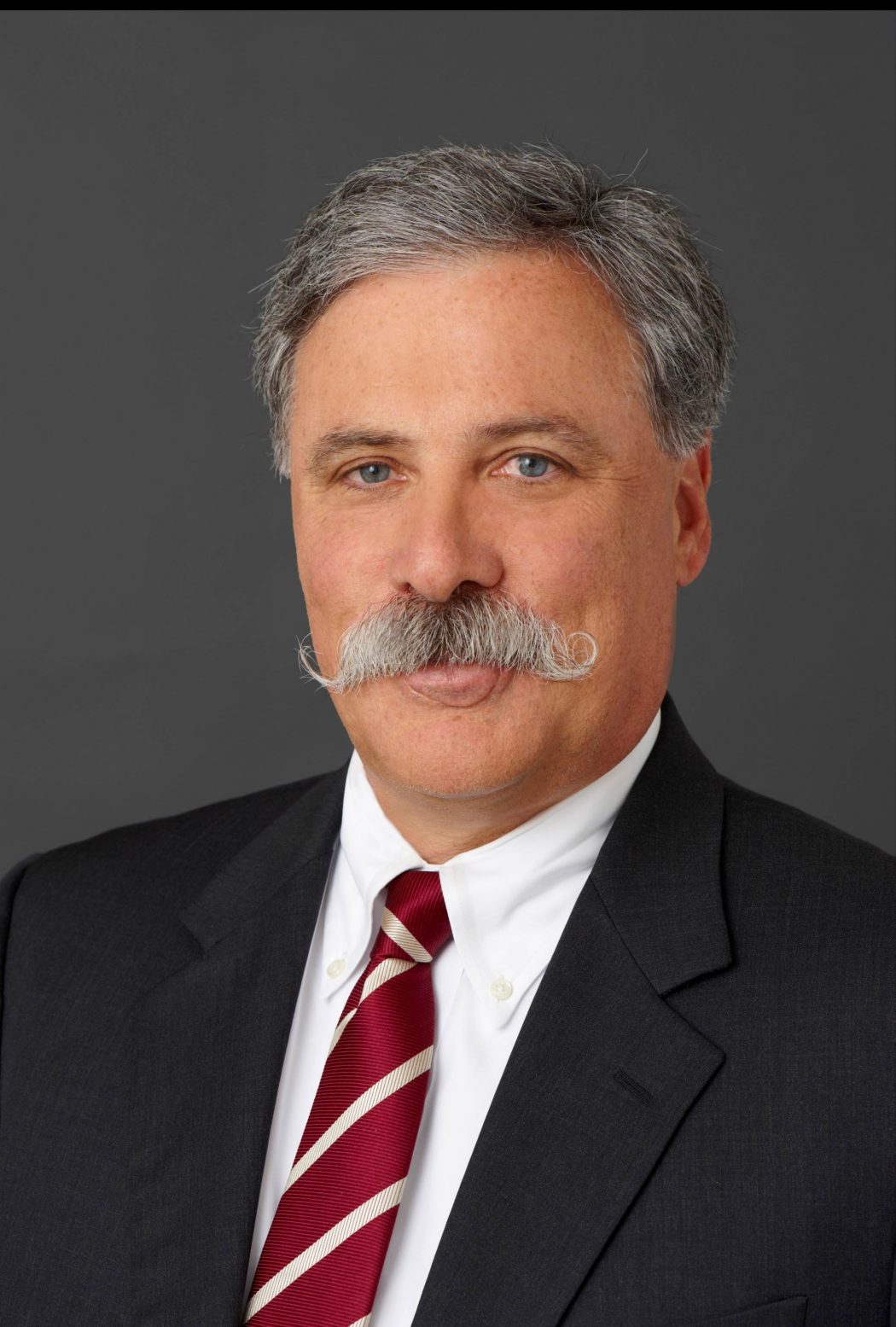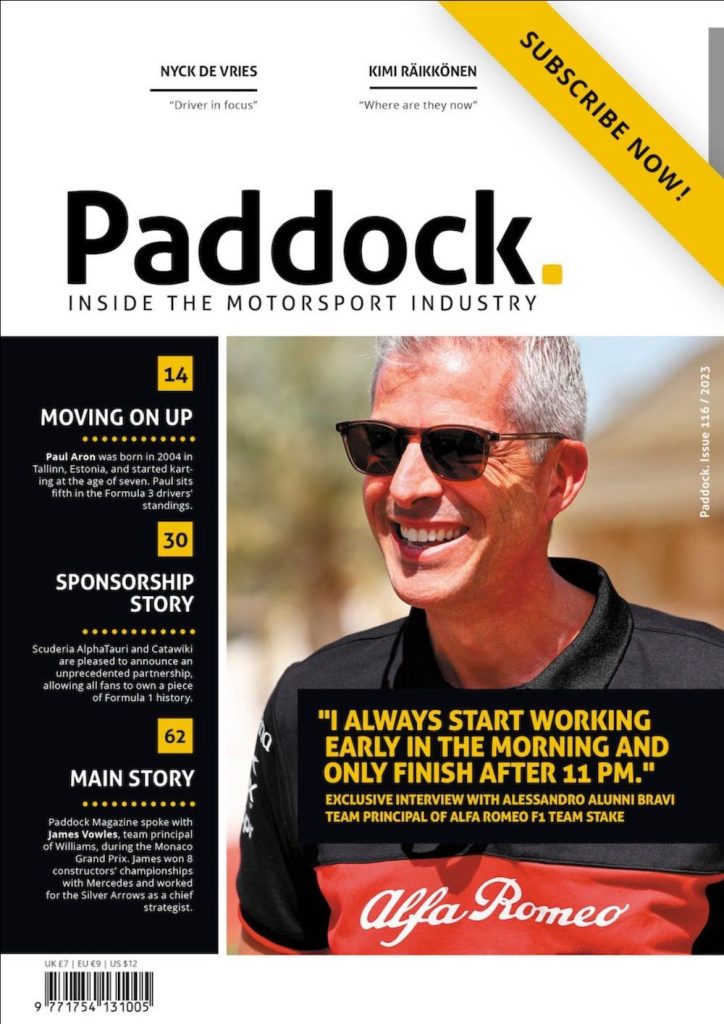Can Liberty Media extract what it needs from Formula 1 whilst enhancing the show and solving world peace at the same time? Ross Brawn is here to help.
Click here to subscribe to our print edition!
The situation
Whilst most observers of Formula 1 feel the new era will be a change for good on the sporting side, what does it mean for the commercial side of the sport?
Unless you’ve been stuck under a rock these past six months, you’ll have heard that Liberty Media bought into Formula 1 and deposed long-standing boss Bernie Ecclestone at the same time. The world is out on whether the latter is a sound or naive adjustment. What is agreed is that Liberty Media won’t look to change a winning formula beyond all recognition. No business goes into an acquisition of a successful and profitable enterprise to completely pull it apart. It looks to improve, enhance and massage those areas it feels it can affect positive change as it hopes to add value for the shareholders along the way.
Formula 1’s business model has been well documented and scrutinised of late. Under Bernie Ecclestone, the series evolved over 40 years into the major global platform that it is today. Along the way, Ecclestone broke some eggs and created an elaborate network of agreements with a myriad of partners that are undoubtedly very complex and will take many years to unravel. In doing so, Ecclestone undoubtedly left some value on the table and perhaps missed opportunities due to lack of understanding or felt were less important than other priorities at the time. Whichever it was, most agree there are areas for immediate change and some, where change will be longer.
It’s certainly true that Liberty Media can shake things up. They are the majority shareholder, with significant experience in their domestic territory and on a global level through events, sport and media businesses. They can bring their experience to bear on Formula 1, in fact, they have made very promising and immediate steps to effect positive change in the form of key management appointments at FOM. Such changes give rise to hope.
One would like to think that the Liberty Media era will be able to open up Formula 1 in North America. With their experience in MLB and other sports, the conversations that Liberty Media can open will surely follow in what was always a challenging market for Mr E.
Instead of a ringmaster
The appointment of Ross Brawn is a positive move. Ross is a man who has experienced most aspects of Formula 1 from a team perspective and more recently from that of the fan. Brawn is an intelligent individual with the ability to speak with clarity and purpose, ensuring people easily understand what he is saying, and what he is saying is usually considered and to the point. It seems that the days of innuendo and mixed messages designed to confuse and divide might be over.
Liberty Media has many areas to focus their attention in its first season at the helm. Sporting, Promoter, TV and Commercial could benefit from some fresh thinking and alternative perspectives. For me, the key question is what do Liberty Media want to get out of the Formula 1 acquisition? Most of what we have heard or read recently is focused on what the sport can get from Liberty Media. Understanding what the company’s objectives are will frame what sort of changes they are most likely to implement.
The digitisation of the sport can expect some significant step changes. Fans are moving away from traditional forms of consuming sport and Liberty Media has been at the forefront of this movement. As a key player in the media landscape and as a rights holder in American domestic sport, Liberty Media has innovated and continue to lead the way in bringing content to consumers in different ways. Formula 1 has a long way to go on this front and monetisation of these channels will surely follow once the audiences pick up.
More moves to make
The relaxation of the social media landscape at the first two tests of the pre-season has had an immediate and positive effect. Drivers can showcase their workspace with their audiences and the teams can engage with their legions of fans in a more in-depth and enlightening way. It’s a start, what comes next is the more interesting and important part of the future story for Formula 1.
Liberty Media should look to address the commercial side of the sport. The previous administration was excellent at sourcing multi-million dollars, multi-year agreements with blue-chip brands, a skill that attracted the private equity and investment funds to the series in the first place. However, as many brands were turned off as were turned on by the sport and the unpredictability of the politics of the sport so we should expect an increase in interest from blue-chip, FMCG and entertainment brands looking to partner with the series.
The former administration was highly accomplished in signing headline partners for the series, Rolex, Emirates, Heineken, UBS, LG to name a few. Few opted for a regional sponsorship acquisition model since this takes heavy resource, a clearly defined sponsorship proposition and the acceptance that you will have a high churn rate of partners. Manchester United are the masters of this model. Formula 1 has traditionally looked for global partners that can cover 60%-70% of the footprint of the sport and brands looking to transpose Formula 1’s global image to their own brand. In time, expect to see more regionally based deals, more title partners for Grands Prix, more categories of sponsorship within the Formula 1 commercial model. What does this mean for the teams, who are already struggling to source partners? Well, they’re going to have to think smarter and offer more than space on their high-speed machines.
The States
America needs to be a core focus for growth! One would like to think that the Liberty Media era will be able to open up Formula 1 in North America. With their experience in MLB and other sports, the conversations that Liberty Media can open will surely follow in what was always a challenging market for Mr E. Securing more USA based races on the calendar should be a priority, with Formula E in New York from 2017, open-wheel motorsport should become more prevalent, and in such a huge country hosting two to three races can’t be out of the question, can it?
The digitisation of the sport can expect some significant step changes. Fans are moving away from traditional forms of consuming sport and Liberty Media has been at the forefront of this movement.
To achieve the commercial imperatives Liberty Media must be considering, they will need to beef up the headcount at Formula One Management (FOM). Step one is already in place with a change of headquarters. The former Ecclestone-owned Princes Gate premises were too small for the old FOM setup and therefore the move to a new 21,000 square feet of office space in central London will provide much-needed room for growth. It’s been reported that the Liberty Media-owned Braves MBL team have an 80-strong commercial team for a domestic sporting team, whilst FOM, operating across 20 different counties have around a handful of people. To capitalise on any enhanced commercial opportunities, the new owners will need to increase headcount in the London office and establish outposts regionally.
Engaging fans, especially in the USA, is something Formula 1 has long talked about doing better. If you’ve been to a Formula 1 race recently, you’ll have been struck by the scarcity of engagement and brand activation at the race tracks these past few years. Where the likes of Goodwood Festival of Speed go large on fan engagement and interaction with brands, Formula 1 has seemed to ignore the fan at the expense of the B2B guest. The key ingredient to these areas being active, engaging, exciting would be for the new owners to focus on FMCG & entertainment partners for the sport. These brands will benefit greatly from the international exposure of the sport, they will have a desire to activate in the cities where Formula 1 goes to and they will help promote the sport to the masses in return.
Keeping up
Whilst Formula 1 has been focusing on its sale, maintaining an imbalance between the teams and squeezing as much from their promoters and TV partners as they can, Formula E has been pushing ahead with their electric racing series and developing their business and entertainment model to the delight of a new motorsport audience. As the series continues, the audiences get stronger and the brands keep coming in. Enel, Allianz, Jaguar, Mercedes-Benz (potentially) to name a few. What these brands have identified is FE’s flexible approach to creating partnerships and delivering value to the fans and to the stakeholders in the series. The focus has been on creating a sustainable model for promoters, teams and brands to achieve their individual goals whilst simultaneously solidifying Formula E as a credible motorsport series. Whether it rivals Formula 1 is neither here nor there. It’s doing its thing and doing it well if Formula 1 continues to navel-gaze, they could look up in a few years and find they’re in second place.
For over four decades, Formula 1 was controlled by one man. It’s now owned and controlled by a serious company. Only time will tell if this will be a success. Liberty Media deserve the benefit of the doubt and they have been given plenty of slack by the Formula 1 media, for now. If the positive change fails to materialise or is slow to arrive, expect the usual moaners and groaners to jump back on their soapboxes and call it out. We believe change is good.
The King is dead, long live the King!










Related Articles